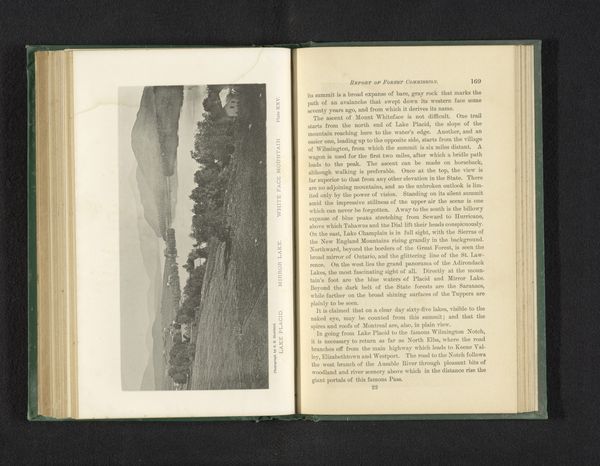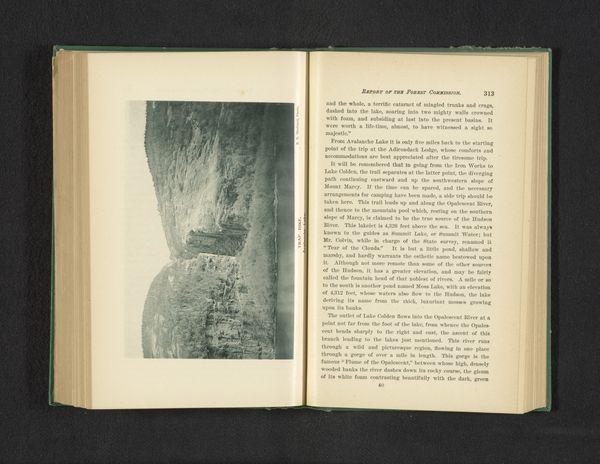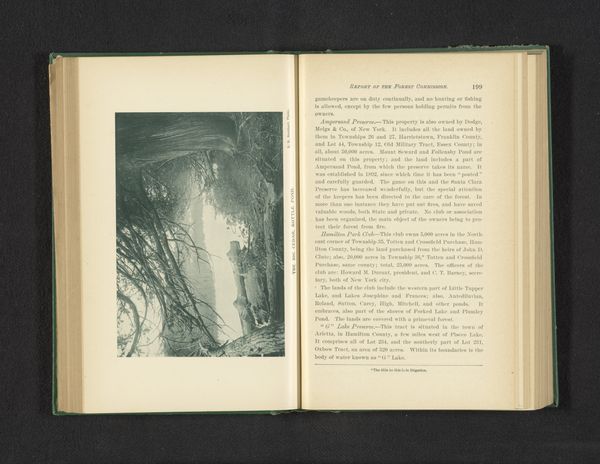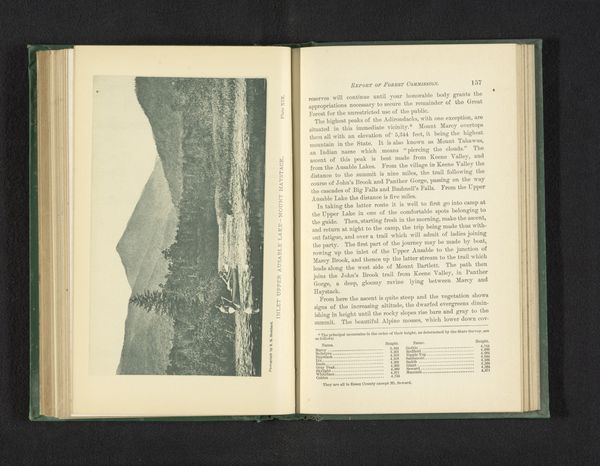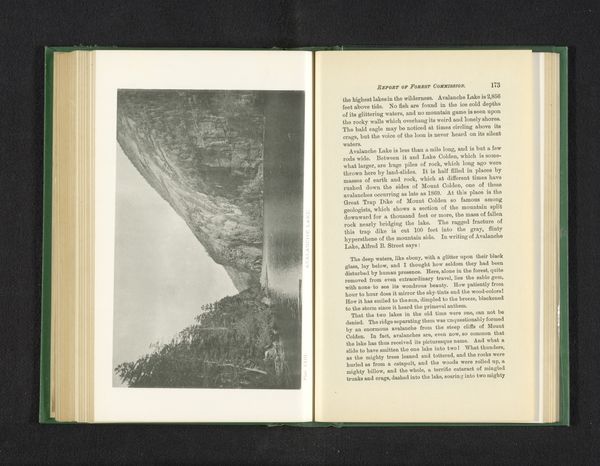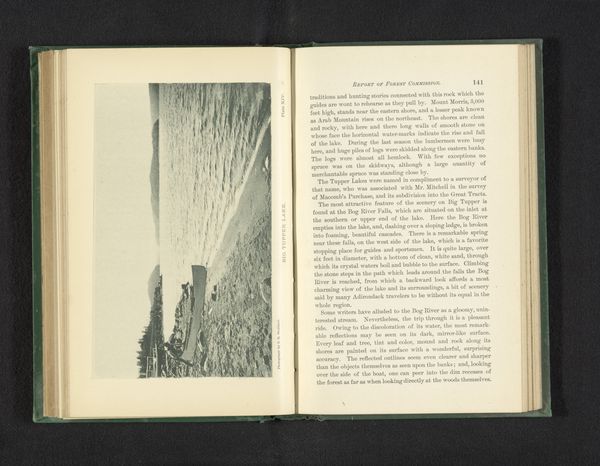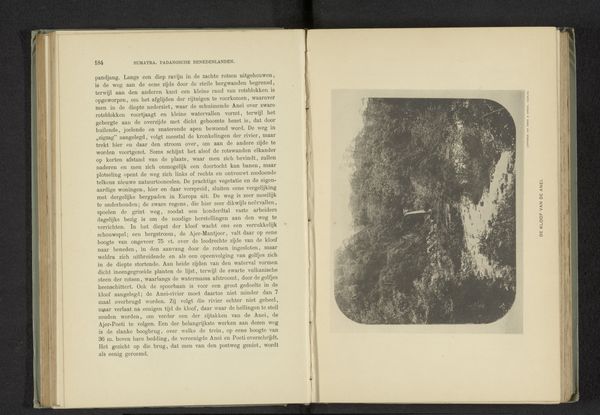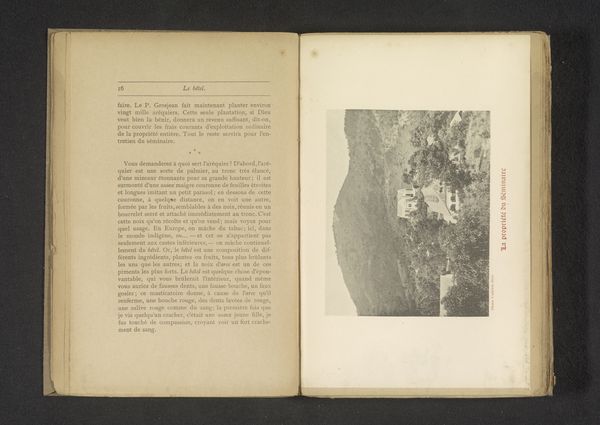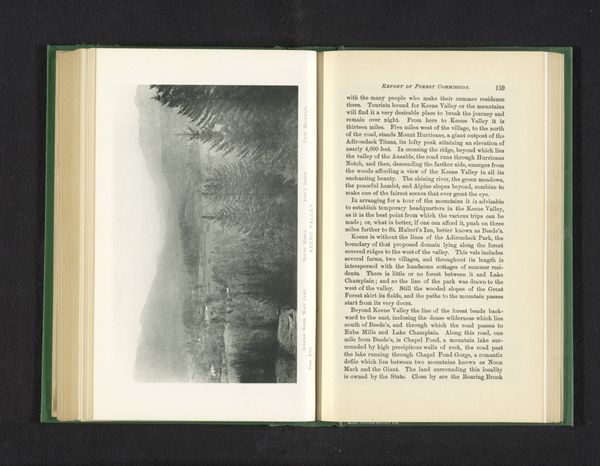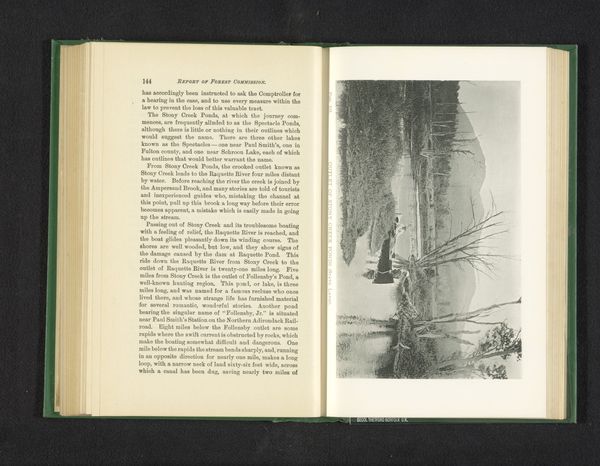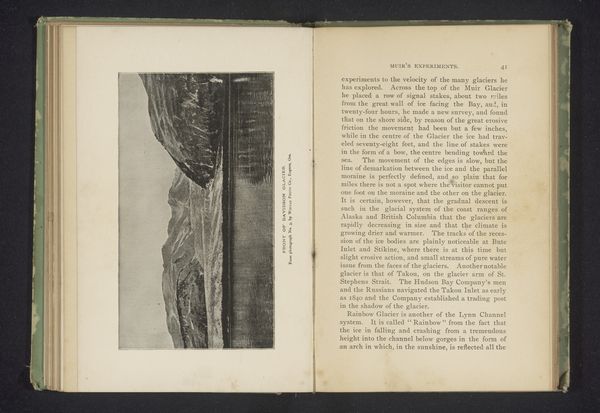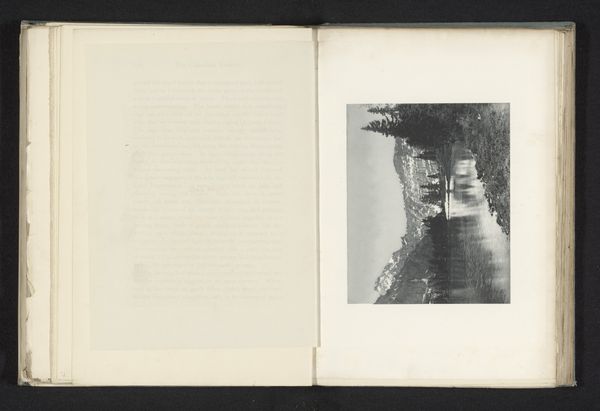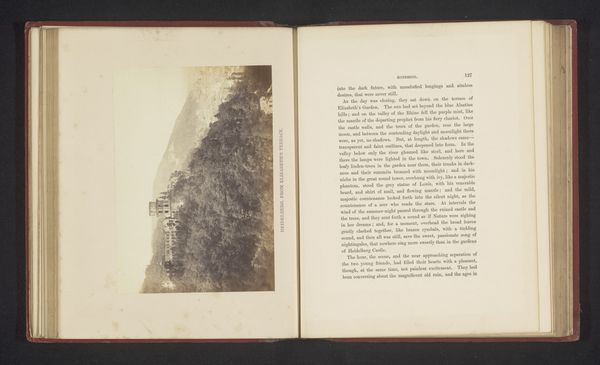
#
aged paper
#
lake
#
homemade paper
#
paper non-digital material
#
paperlike
#
personal journal design
#
paper texture
#
folded paper
#
publication mockup
#
letter paper
#
paper medium
Dimensions: height 113 mm, width 177 mm
Copyright: Rijks Museum: Open Domain
Editor: Here we have "Avalanche Lake," a photograph from 1891 by Seneca Ray Stoddard, printed on paper. The book is open and looks almost new. I find myself drawn to the composition. The dark, looming mountain face contrasted against the lighter lake creates a dramatic visual effect. What compositional elements strike you most in this work? Curator: The first element that stands out is the sharp contrast created by the photographer. I see it not only between light and dark, but between textures as well. The rough, craggy mountain on one side versus the still, smooth lake on the other. Also, note the use of diagonals. The angle of the mountain directs our gaze downwards, focusing on the relationship between the mountain and the water. Editor: I hadn't considered the contrast in texture. The angle definitely leads your eye. But is there a commentary on nature here? Curator: The commentary lies within its intrinsic visual vocabulary: the severe angle of the mountain dominates and threatens to overwhelm. Now, consider what we see on the facing page - not only words about this area, but, as text, forms and textures. A further interplay. It asks us, "How do all these things combine to communicate, or make meaning?" Editor: So it's less about representing Avalanche Lake itself and more about the dialogue created between the photographic image and the textual representation in the book, and all the lines and forms in them? Curator: Precisely. The interplay between the components within the frame constructs its own formal world, regardless of what that world is representing. This gives "Avalanche Lake" a distinctive aesthetic voice that surpasses its representational function. Editor: That's a great perspective. I think I have a better understanding of how formalist analysis encourages us to really focus on what's in front of us and analyze how an image's pure form and layout affect how we see it. Curator: Indeed, looking closely can reveal unseen depths in even the most familiar landscapes.
Comments
No comments
Be the first to comment and join the conversation on the ultimate creative platform.
